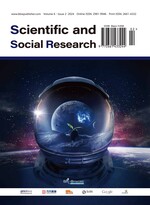Abstract
Stream-of-consciousness movies are a peculiar style of movie influenced by stream-of-consciousness novels, which are characterized by their emphasis on inner thoughts. These movies usually adopt techniques like nonlinear narrative, dream, flashback, and free association, to express the deeper workings of a character’s psyche. Ingmar Bergman’s Wild Strawberries is a masterpiece of stream-of-consciousness movies. It reflects many characteristics of stream-of-consciousness films. This paper analyzes Wild Strawberries from both rationalist and irrational philosophical perspectives, with a focus on three main aspects: the aesthetic interpretation of the film, its content and characters, and the narrative structure and threads. It delves deeply into the artistic attributes of stream-of-consciousness films.
References
William J,1884, On Some Omissions of Introspective Psychology. Mind, 9(33): 1–26.
Duan P, Sun H, 2019, Fantasy and Reality: On the Role of Stream of Consciousness in Cinema and Methods of Presentation since the New Century. Contemporary Cinema, 2019(03): 48–50.
Liao Y, 2010, Interpreting the Narrative Technique of Stream-of-Consciousness Cinema from Hiroshima Mon Amour. Film Literature, 2010(19): 126–127.
Bie Z, 2014, Wild Strawberries: Dreams and Spiritual Redemption in an Aesthetic Stream of Consciousness. Film Literature, 2014(23): 91–92.
Wu Q, 2012, Reading the Movie Wild Strawberries from the Perspective of Dream. Movie Review, 2012(03): 63–64.
Pan J, Shen J, Gao B, 2015, Analysis of Classic Business Cards in World Cinema, Zhejiang University Press, 167– 170.
